Museum

Dainius Liškevičius. A work by an unknown artist. Object, 1970–1980?, photographer Arturas Valiauga, © / courtesy of the artist
Opera di artista ignoto. 1970–1980?
Opera di artista ignoto. 1970–1980?
Dal 9 May 2015 al 22 November 2015
Venezia
Luogo: Biennale Palazzo Zenobio / Pad. Lituania
Indirizzo: Fondamenta del Soccorso 2569, Dorsoduro
Curatori: Vytautas Michelkevicius
Sito ufficiale: http://www.museo.lt
Il Museo di Dainius Liškevičius, aperto in un giardino di Venezia per rappresentare il Padiglione nazionale della Lituania, è un museo fittizio, ma basato su fatti reali ed autobiografici. La collezione raccolta dall'artista racchiude molti significati e funge da macchina del tempo ellittica. Essa ci trasporta allo stesso tempo nel recente passato sovietico, mette in dubbio il presente e prospetta la nostra ansia verso il futuro ricco di tensioni culturali e geopolitiche. Il Museo si presenta essenzialmente come un'esperienza unica di ricerca artistica che non solo aiuta ad approfondire il regime totalitario sovietico, ma serve anche come modello di interazione con i poteri egemonici del presente e dell'influenza che questi esercitano sul discorso pubblico e sulla libertà dell'artista. Il Museo può essere interpretato inoltre come una variante del nuovo patriottismo che riconsidera i miti nazionali delle nuove democrazie ed il loro tentativo di creare legittimità di un moderno stato nazionale. La presentazione del Museo come padiglione nazionale è un atto trasgressivo che lo qualifica come struttura che può osare di più rispetto ad un museo tradizionale.
Disposizione non gerarchica nello spazio delle opere dell'artista, degli oggetti sovietici di uso quotidiano e degli altri artefatti coinvolge lo spettatore in almeno quattro racconti paralleli e sovrapposti, che parlano della libertà dell'artista e della parola nella Lituania occupata, in tutta l'URSS e nel mondo odierno.
Attraverso un'installazione densa di contenuti (lo Studio delle curiosità), creata attraverso il linguaggio dell'arte contemporanea, lo spettatore sarà immerso negli eventi delle proteste politiche (?) controverse, scoppiate nella Lituania occupata e a Leningrado negli anni 1960 - 80 grazie a tre ambigue figure rivoluzionare. Dainius Liškevičius riscrive la storia dell'arte lituana suggerendo di interpretare tali eventi come casi di arte clandestina, performance politiche e arte distruttiva che in quei tempi erano proibite e quindi non esistevano.
Presentando la sua visione della storia della Lituania (della sua arte), intrisa di sottile ironia, l'artista offre una versione inaspettata dell'archeologia degli oggetti. Qui ogni oggetto ha una storia personale e collettiva che mostra i segni del tempo e permette di fare un salto nel passato. Nello spazio del Museo la biografia di Liškevičius si intreccia con le biografie dei rivoluzionari dissidenti e degli esponenti culturali idealizzati (come Jean - Paul Sartre), cancellando ulteriormente il limite sottile tra la modalità soggettiva ed oggettiva di raccontare storie.
Nel Museo saranno presenti le guide in lingua lituana, inglese e a volte italiana che aiuteranno i visitatori a scoprire la narrativa multilineare che si intreccia nell'esposizione. Inoltre una guida stampata in inglese svelerà le storie dei tre personaggi rivoluzionari e di alcuni altri oggetti esposti. Sarà a disposizione anche il libro “Il Museo” (2013) con i commenti esaurienti sul progetto e la galleria completa di tutte le immagini.
Vedi anche:
De' leoni e de' l'altre bestie...*
Disposizione non gerarchica nello spazio delle opere dell'artista, degli oggetti sovietici di uso quotidiano e degli altri artefatti coinvolge lo spettatore in almeno quattro racconti paralleli e sovrapposti, che parlano della libertà dell'artista e della parola nella Lituania occupata, in tutta l'URSS e nel mondo odierno.
Attraverso un'installazione densa di contenuti (lo Studio delle curiosità), creata attraverso il linguaggio dell'arte contemporanea, lo spettatore sarà immerso negli eventi delle proteste politiche (?) controverse, scoppiate nella Lituania occupata e a Leningrado negli anni 1960 - 80 grazie a tre ambigue figure rivoluzionare. Dainius Liškevičius riscrive la storia dell'arte lituana suggerendo di interpretare tali eventi come casi di arte clandestina, performance politiche e arte distruttiva che in quei tempi erano proibite e quindi non esistevano.
Presentando la sua visione della storia della Lituania (della sua arte), intrisa di sottile ironia, l'artista offre una versione inaspettata dell'archeologia degli oggetti. Qui ogni oggetto ha una storia personale e collettiva che mostra i segni del tempo e permette di fare un salto nel passato. Nello spazio del Museo la biografia di Liškevičius si intreccia con le biografie dei rivoluzionari dissidenti e degli esponenti culturali idealizzati (come Jean - Paul Sartre), cancellando ulteriormente il limite sottile tra la modalità soggettiva ed oggettiva di raccontare storie.
Nel Museo saranno presenti le guide in lingua lituana, inglese e a volte italiana che aiuteranno i visitatori a scoprire la narrativa multilineare che si intreccia nell'esposizione. Inoltre una guida stampata in inglese svelerà le storie dei tre personaggi rivoluzionari e di alcuni altri oggetti esposti. Sarà a disposizione anche il libro “Il Museo” (2013) con i commenti esaurienti sul progetto e la galleria completa di tutte le immagini.
Vedi anche:
De' leoni e de' l'altre bestie...*
SCARICA IL COMUNICATO IN PDF
COMMENTI

-
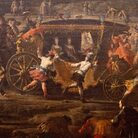 Dal 20 December 2025 al 20 April 2026
Caserta | Reggia di Caserta
Dal 20 December 2025 al 20 April 2026
Caserta | Reggia di Caserta
Regine: trame di cultura e diplomazia tra Napoli e l’Europa
-
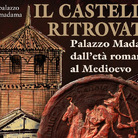 Dal 19 December 2025 al 23 March 2026
Torino | Palazzo Madama - Museo Civico d’Arte Antica
Dal 19 December 2025 al 23 March 2026
Torino | Palazzo Madama - Museo Civico d’Arte Antica
Il castello ritrovato. Palazzo Madama dall’età romana al medioevo
-
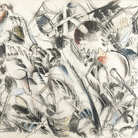 Dal 17 December 2025 al 19 January 2026
Roma | Palazzo della Cancelleria
Dal 17 December 2025 al 19 January 2026
Roma | Palazzo della Cancelleria
De Humana Mensura di Linda Karshan
-
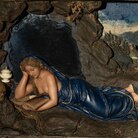 Dal 18 December 2025 al 12 April 2026
Firenze | Gallerie degli Uffizi
Dal 18 December 2025 al 12 April 2026
Firenze | Gallerie degli Uffizi
Cera una volta. Sculture dalle collezioni medicee
-
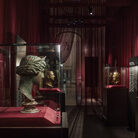 Dal 11 December 2025 al 9 April 2026
Firenze | Museo Archeologico Nazionale di Firenze
Dal 11 December 2025 al 9 April 2026
Firenze | Museo Archeologico Nazionale di Firenze
Icone di Potere e Bellezza
-
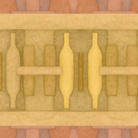 Dal 11 December 2025 al 11 January 2026
Roma | Palazzo Esposizioni Roma
Dal 11 December 2025 al 11 January 2026
Roma | Palazzo Esposizioni Roma
Giorgio Morandi nella Collezione Eni. Un viaggio attraverso la storia culturale del cane a sei zampe e l’eredità di Enrico Mattei


